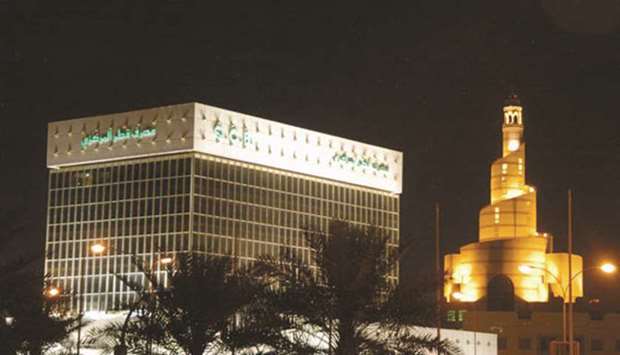Year-end Review
Robust credit off-take and securities portfolio have driven Qatari banking assets to more than QR1.3tn by end-October, indicating the unjustified blockade on the country by a quartet of Arab nations did not have a major impact on local lenders this year.
The total assets of all the commercial banks in the country (all branches inside Qatar) grew by a healthy 10.6% year-on-year to QR1.32tn in October, recent Qatar Central Bank (QCB) data showed.
Total credit portfolio, which constituted 69% of the banking sector’s overall assets, rose 13% year-on-year to QR912.94bn, mainly on the back of robust loans to the government and industry.
On the asset side, the banks’ securities portfolio saw a 13.6% growth year-on-year to QR179.5bn, of which debt amounted to QR107.57bn, followed by sukuk at QR66.3bn, equities QR3.85bn and mutual funds and others QR1.78bn.
Qatar’s banking sector remains resilient with high asset quality and strong capitalisation.
The impact on banks' balance sheets (due to the economic blockade) was mitigated by liquidity injections by QCB and increased public sector deposits.
The macro-prudential indicators for Qatar’s banking sector remain healthy and the embargo has not adversely affected the nation's economic fundamentals either.
The banking system, the mainstay of Qatar’s financial intermediation, remains “solid, solvent, profitable, and capable of facing any possible abnormal conditions,” HE the QCB Governor Sheikh Abdulla bin Saoud al-Thani had said earlier. This is amply evident from the way the banking sector handled the challenges during the past six months. Sheikh Abdulla said the QCB has adopted a proactive approach to monitor the impact of the blockade.
The initial disturbance from outflows of non-resident deposits was well absorbed by the banks through proactive liquidity management with the guidance and support of the QCB. In the initial stages, banks had reinforced their liquidity through available liquidity facilities like Repo and QMR lending. The use of these liquidity facilities has been declining over time, indicating the return to normalcy in the funding structure of banks, Sheikh Abdulla told the Euromoney Qatar Conference 2017.
Qatar’s banking sector has been subject to the highest regulatory environment, as prescribed by the international standard-setting bodies. Guidance and the updating of regulations for governance and liquidity infrastructure is a continuous process and the country’s banking system was well adapted to the changing regulatory environment.
“QCB has already implemented Basel III guidelines on capital requirements and liquidity. Our macro-prudential regulations are also suitably modified to the changing regulatory and supervisory environment. Thus, our banking system is broadly at par with its global counterparts,” Sheikh Abdulla said.
Some of Qatar’s banks have already expanded their operations beyond the borders and some are leaders in the region for mergers and acquisitions.
At the same time, talks on consolidation of the banks are taking place on the domestic banking front. In general, the QCB does not interfere with the business plans or business models of the banking sector, the governor noted.


